Welcome to a detailed tactical analysis examining the strategic prowess of Arne Slot at Feyenoord. In this article, we’ll dissect the tactical nuances and innovative approaches employed by Slot, shedding light on how his methods have influenced Feyenoord’s style of play. With a keen focus on formations, player roles, and key tactical principles, we’ll unravel the intricacies behind Feyenoord’s performances under Slot’s guidance. Join us as we delve into the strategic framework that defines Arne Slot’s tenure at Feyenoord and explore how his tactical influences have shaped the club into what it is today.
Build-up
Low Build-up
In the low build-up, Arne Slot sets his team up in a 3-3-2-3 formation with the goalkeeper playing between the center-backs.
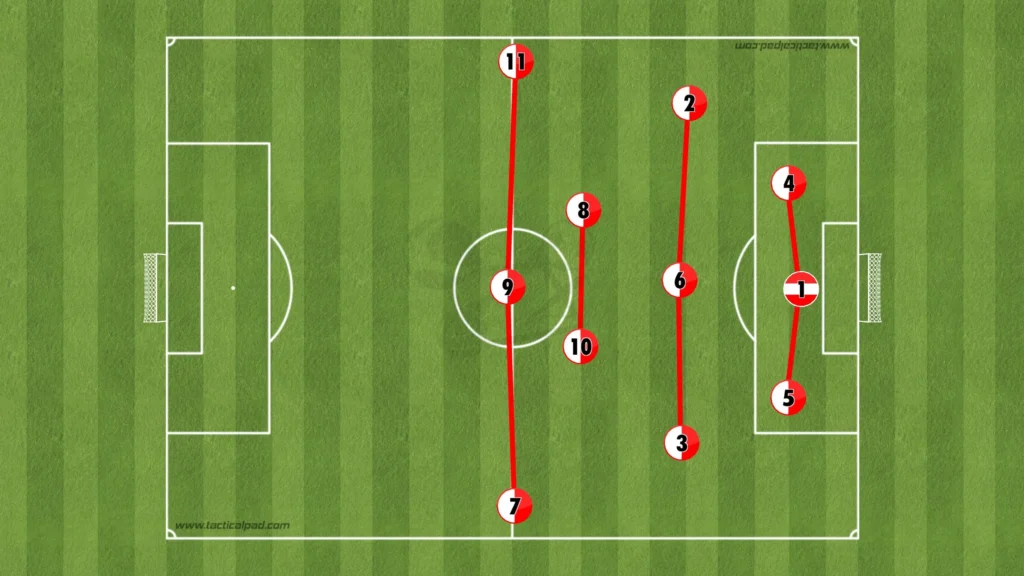
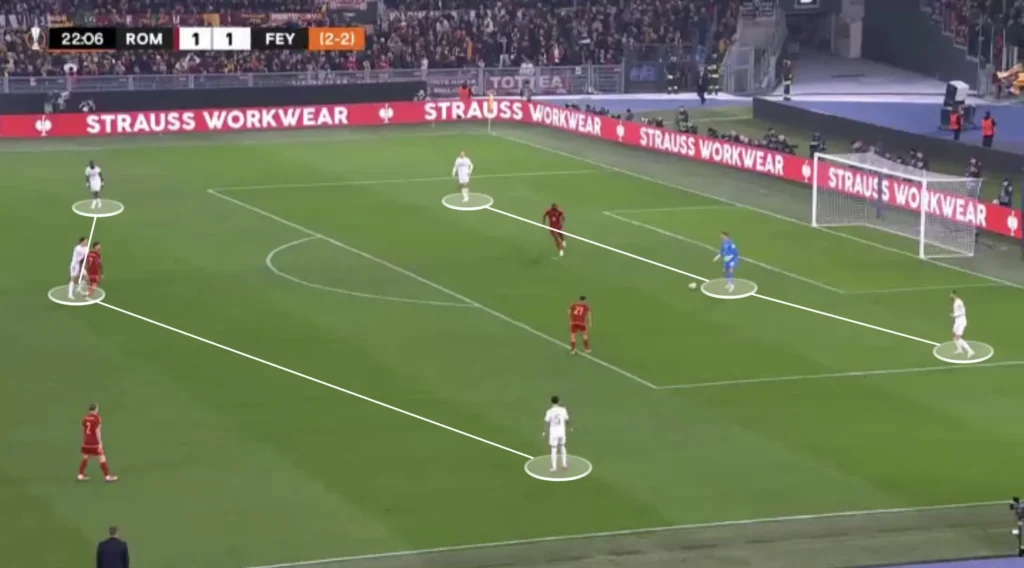
They often drop with the attacking midfielders and like using the goalkeeper, which creates numerical superiorities, allowing them to beat the press.
Inverted Fullbacks
The Feyenoord fullbacks always invert during the build-up, creating more options in the center and less space between the players. Slot likes this because he prioritizes playing through the middle. He needs one player high and wide to pull apart the backline while the rest create numerical advantages in the midfield areas. This builds good conditions in defensive transitions, allowing more players to press when they lose the ball. Another purpose for keeping most of the players central is that it lessens the space between them. This shortens the length of the passes, which naturally shortens the time between passes. This means the opposition players will have less time to push up and press, giving the Feyenoord players more time and control.
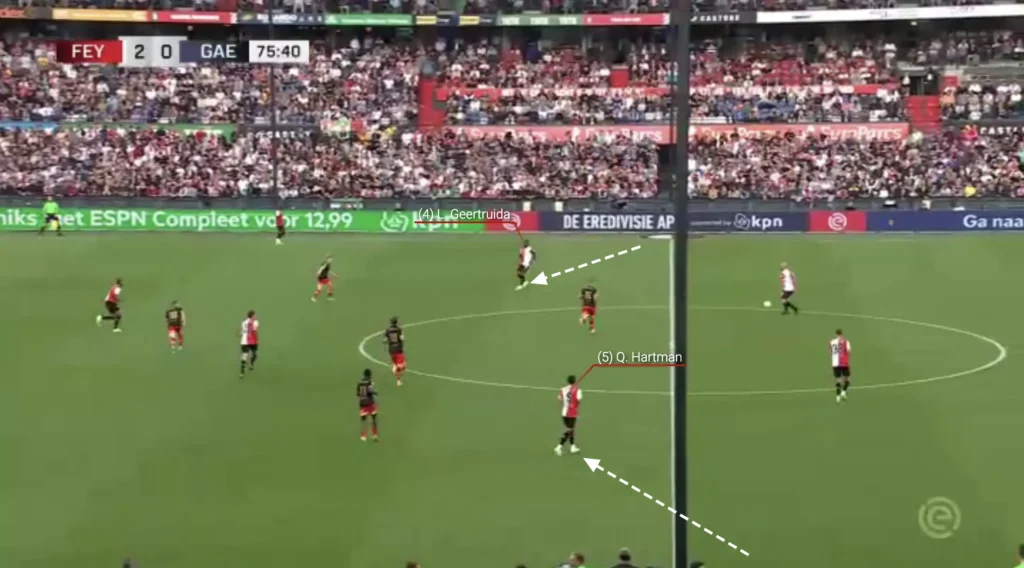
High Build-up
In the high build-up, Slot’s Feyenoord sets up in a 1-2-3-5 formation, the same as in the low build-up without the goalkeeper between the center-backs:
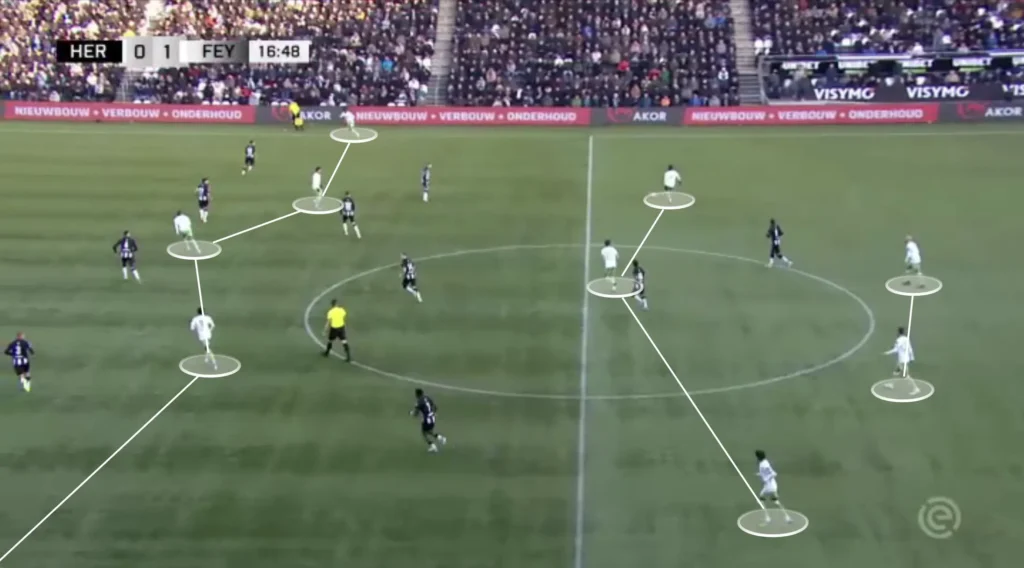
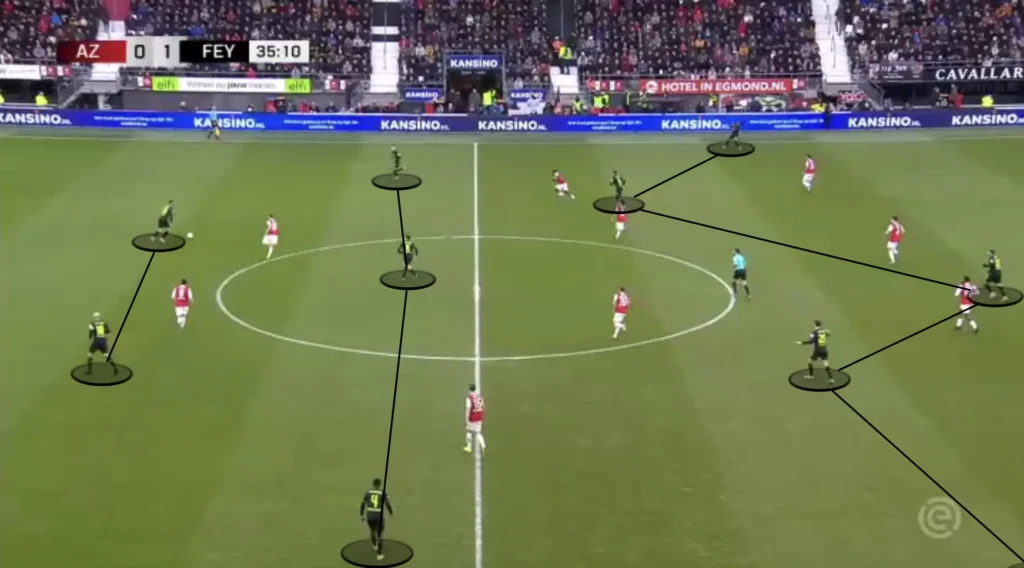
Pulling Apart the Opposition Backline
Arne Slot positions the wingers high and wide, which pulls apart the opposition’s backline. With the striker between the center-backs pulling them together, the spaces between the center-backs and the fullbacks become very big when the wingers are wide.
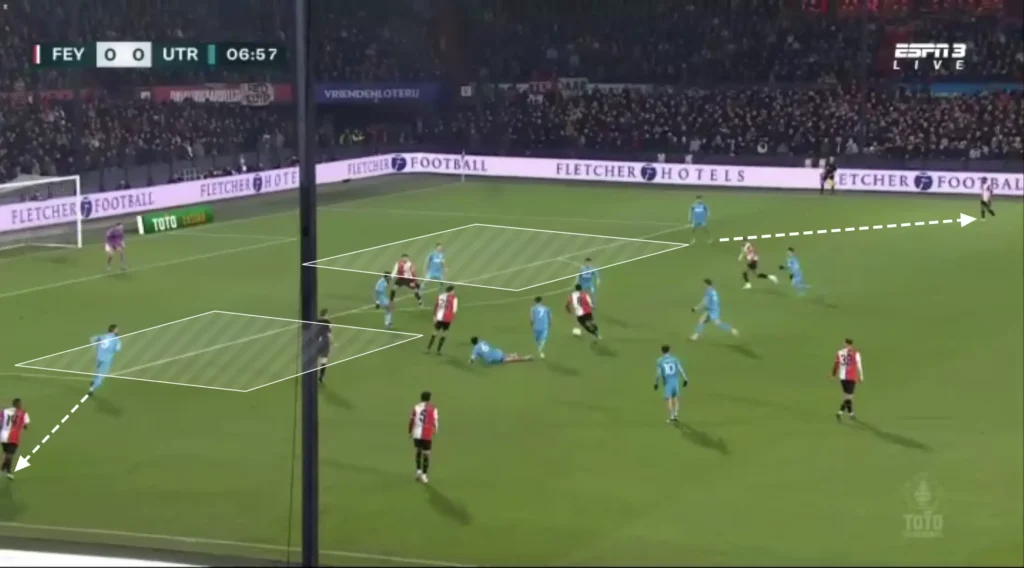
Feyenoord often attacks these spaces successfully with runs from midfielders.
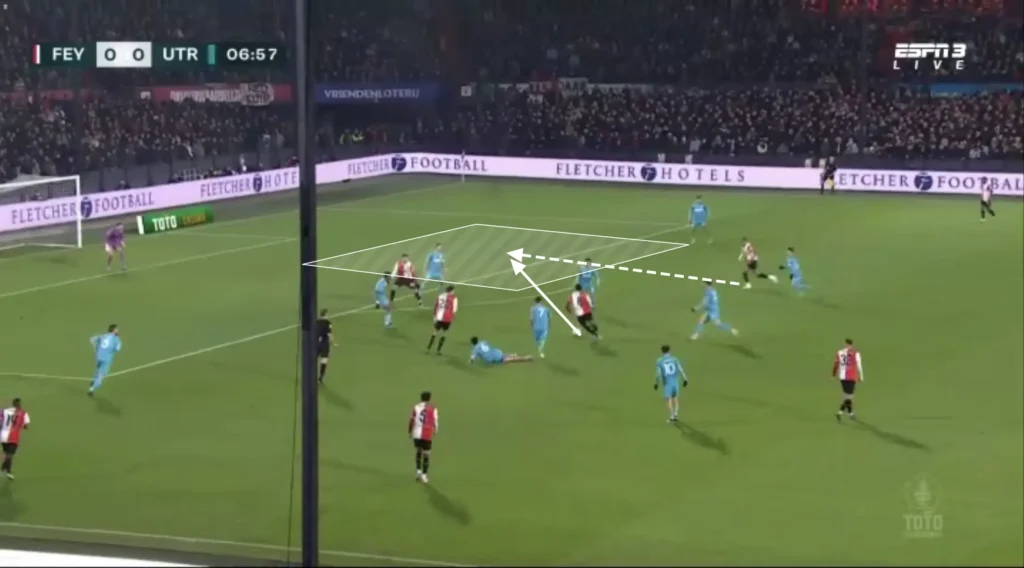
When they have done this a few times, the fullbacks often tuck in to close the space. When they do this, Feyenoord will instead go around the backline, playing the ball to the open winger, who can take it past the opposition defenders.
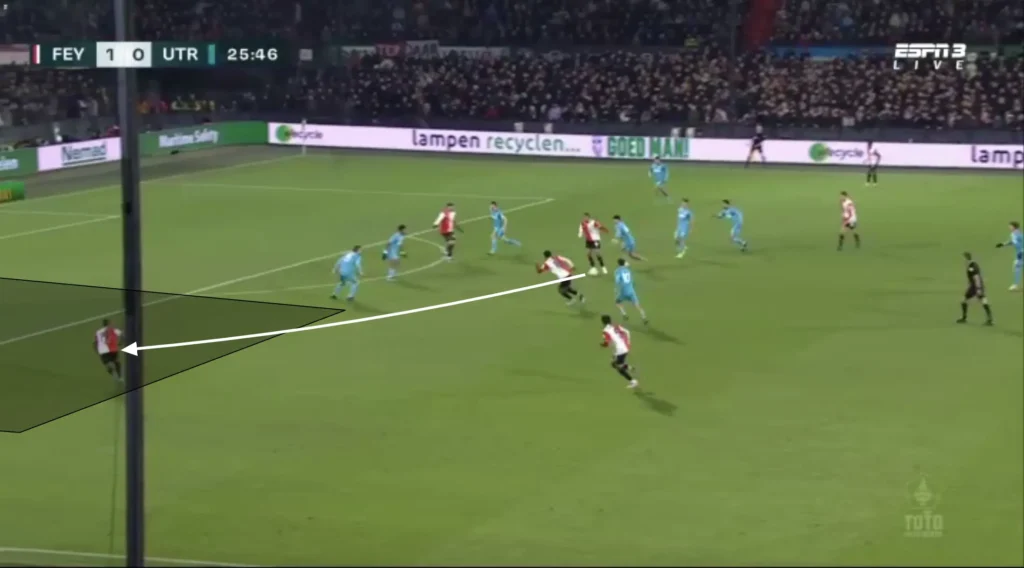
High Backline
A massive aspect of Feyenoord’s high possession build-up is they keep a high backline. This helps in the counterpress because they get closer to the center. Having more players close to the center who can win the ball back makes it difficult for the opposition to recycle possession when they win it. Furthermore, the high backline shortens the distance between players, shortening the time and length of the passes and preventing the opposition from pushing up their defense.
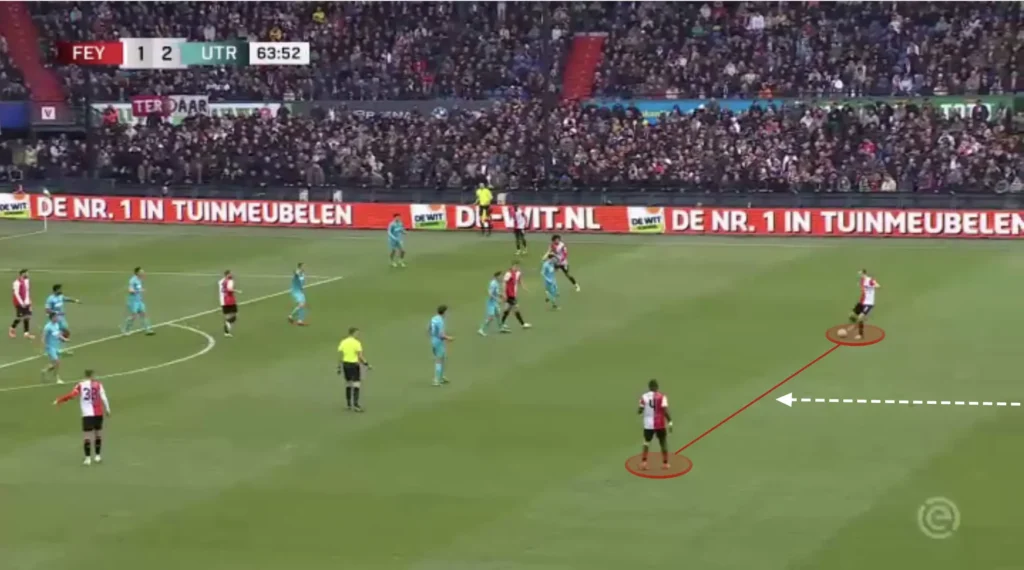
Changing Formation
Feyenoord often rotates in their build-up, creating new formations to confuse opponents. They adapt to their opponent’s formation to create numerical advantages in different areas, allowing them to beat the defense and score more goals. Their most frequent formation change is to drop one of the midfielders into the backline, creating a 1-3-2-5 formation. Feyenoord often do this when playing against two forwards. Creating a 3v2 with the backline against the opposition’s forwards, instead of a 2v2, means that one center-back will be free, allowing them to beat the opposition’s forward line.
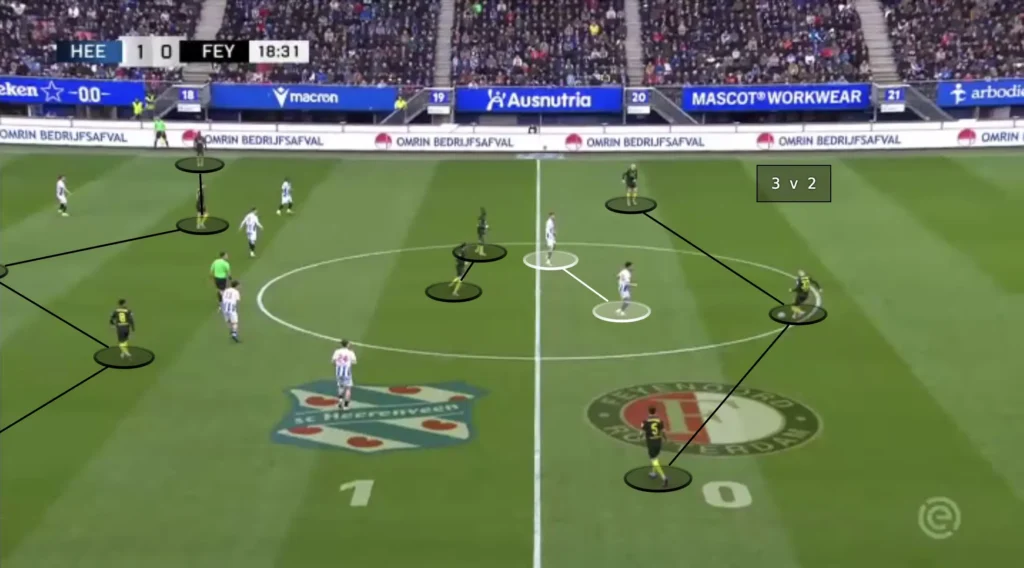
Using the Goalkeeper
Feyenoord will also create a back-three by pushing the goalkeeper up between the center-backs. This produces the same numerical superiority against the first line of teams who defend with two forwards. The advantage of this, however, is it creates the same numerical superiority without losing the extra midfielder, allowing Feyenoord to keep more players higher up the pitch.
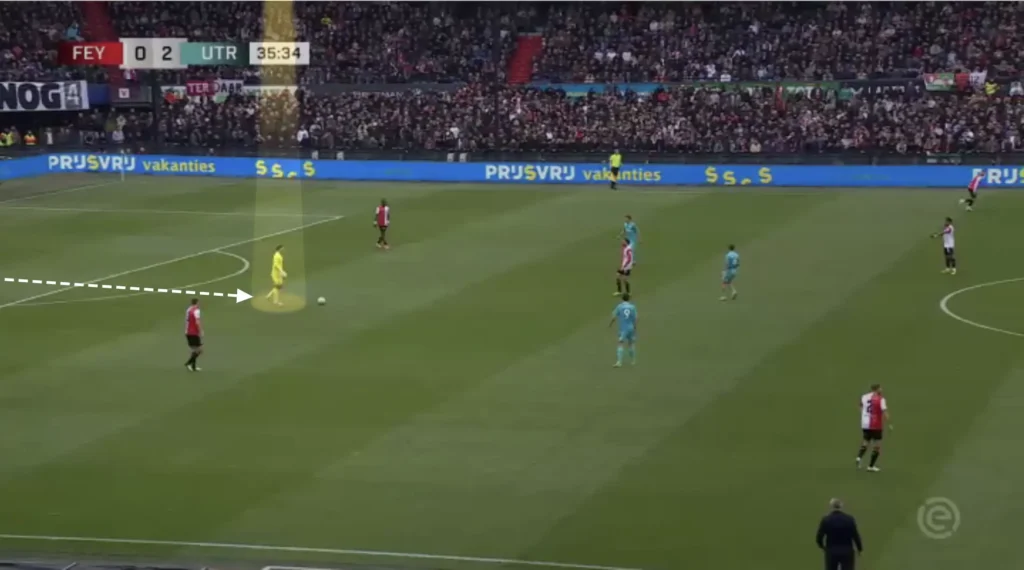
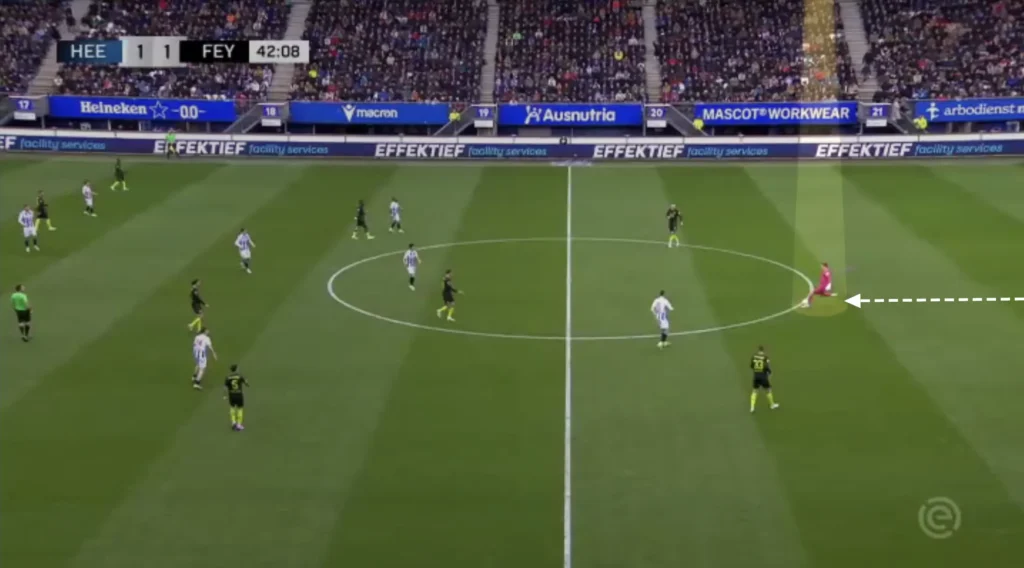
Final Third
Underlaps
Feyenoord is a good team in the final third. They create many chances, mainly by attacking the space between the opposition center-back and fullback. They primarily do this from the wide areas with underlaps from midfielders.
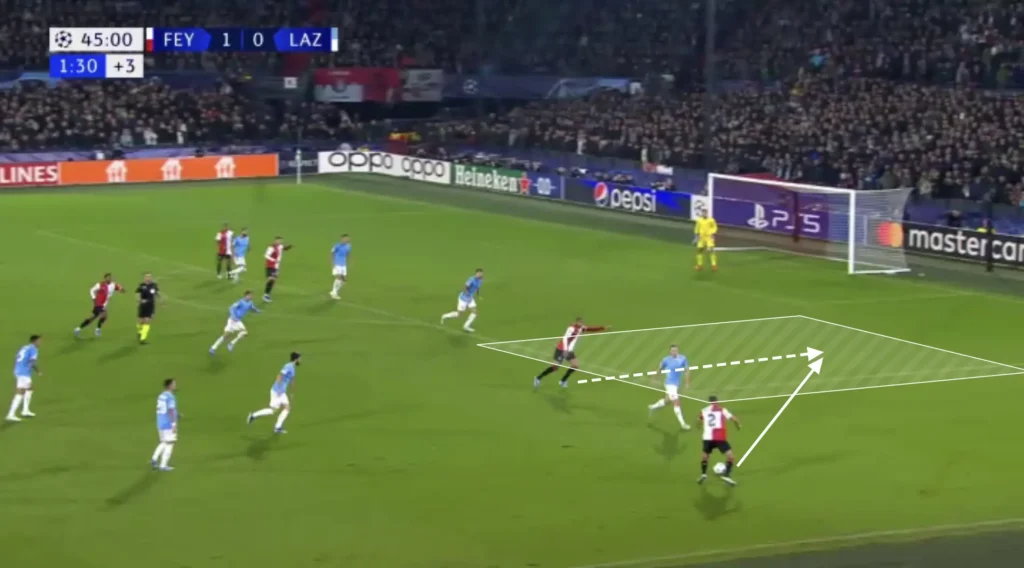
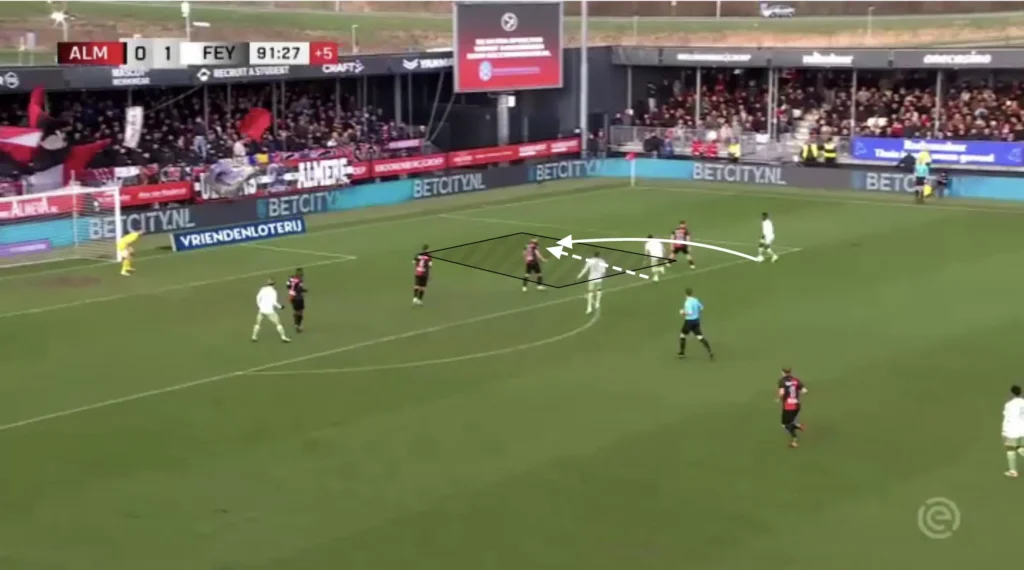
Overlaps
Feyenoord also uses the overlap to produce opportunities in the final third. When the winger gets the ball, a Feyenoord player quickly makes the overlap, creating a 2v1 on the wing. If the opposition fullback drops to cover the overlapping run, the winger could cut inside, taking a shot or combining with a midfielder. If the fullback covers the center, the ball can easily be played to the overlapping player, creating a crossing opportunity.
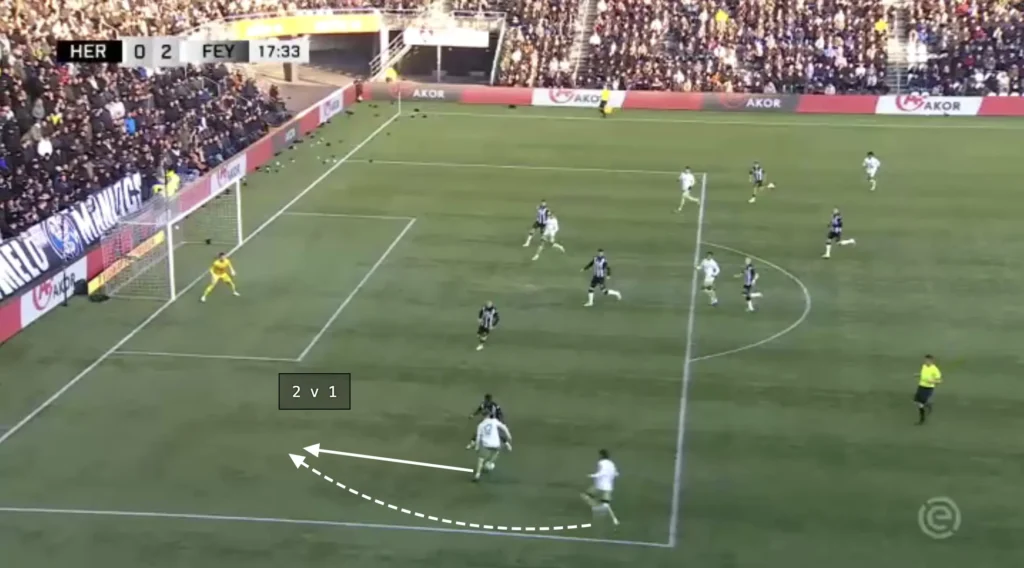
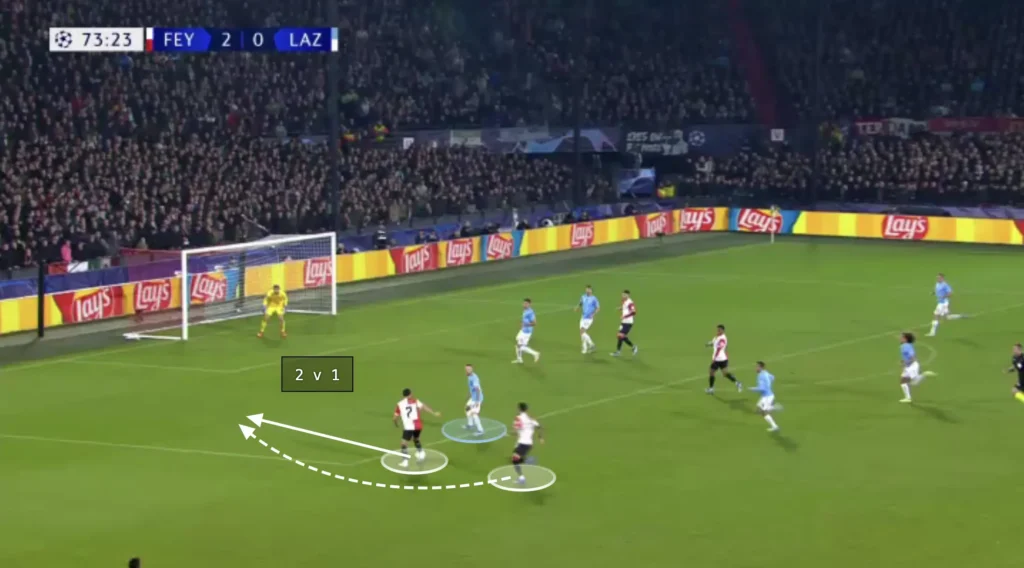
Many Players in the Box
The attacking midfielders and wingers look to make runs into the box when the ball is in the final third, often getting four or five players into these areas to create overloads. The numerical advantages in the box force the defending team to make decisions and leave some players open.
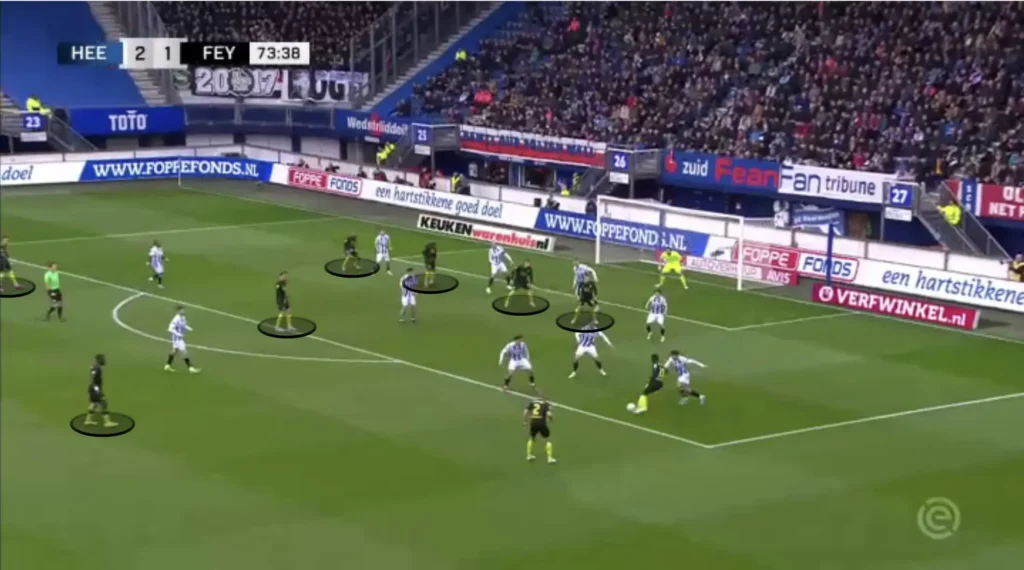
Arne Slot also positions many Feyenoord players outside the box, ready for the second balls and cut-backs. They always succeed in pushing down the opposition’s defense, which opens the space in front of the backline. Feyenoord often finds their midfielders in these spaces, who can shoot or combine with an attacker to create goalscoring opportunities.
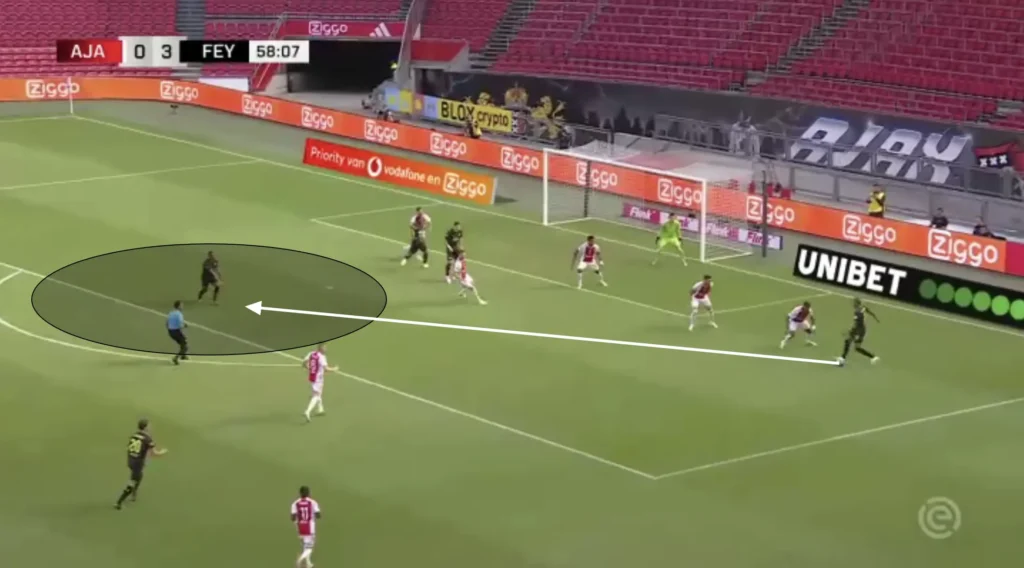
Principles and Tools
Keeping Possession
Arne Slot’s Feyenoord emphasizes a possession-based style of play characterized by patient build-up from the back and intelligent ball circulation across the pitch. Players are encouraged to support each other in tight spaces and maintain positional discipline to sustain possession. Slot’s Feyenoord prioritizes building from the goalkeeper and gradually progressing up the field through short, precise passes. This possession-oriented approach allows Feyenoord to control the game’s rhythm while creating openings to exploit the opposition’s defensive structure.
Rotations and Interchanges
One influential principle in Slot’s playing style is to be fluid within the system and to find different interchanges and rotations. These rotations create a lot of questions for the opponents because they do not know whether they should follow the Feyenoord players or stay in their position. Another part of this is that everyone can play everywhere. Their formation usually stays the same, but different players may occupy different positions. Here, the fullbacks push up and play as wingers instead of coming inside. This forces the wingers to come inside while the attacking midfielders drop. They are in their 1-2-3-5 formation, but they have rotated into it in a different way, which confuses the opposition, who do not know what players to follow.
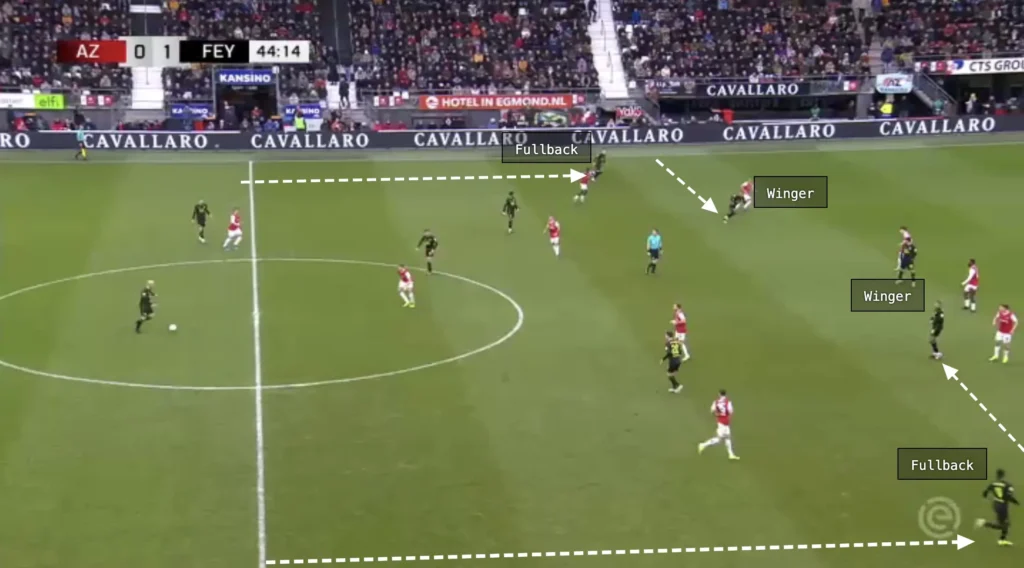
A common pattern in Feyenoord’s build-up is a rotation where an attacking midfielder drags away an opposition midfielder to open the passing lane to the striker. When the inverted fullback has the ball, the attacking midfielder will make a run up towards the space between the opposition center-back and fullback. An opposition midfielder often follows the run, which opens the passing lane from the fullback to the striker. When the ball gets played to the striker, the center-backs usually come in, not allowing the striker to turn. This opens the space for the attacking midfielder, who has continued the run into the space between the center-back and the fullback. The striker will find the attacking midfielder with a one-touch pass, creating a dangerous goalscoring opportunity.
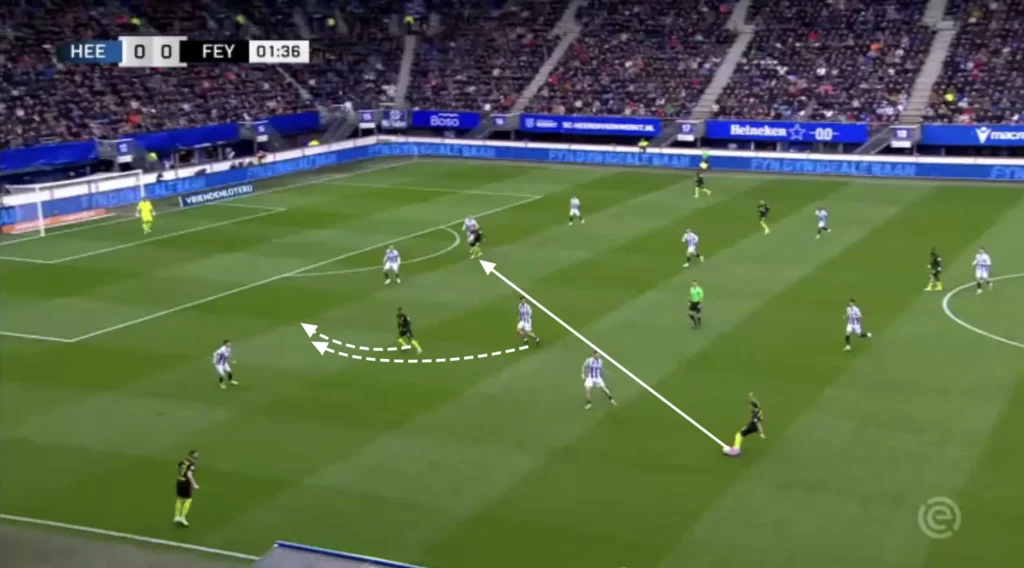
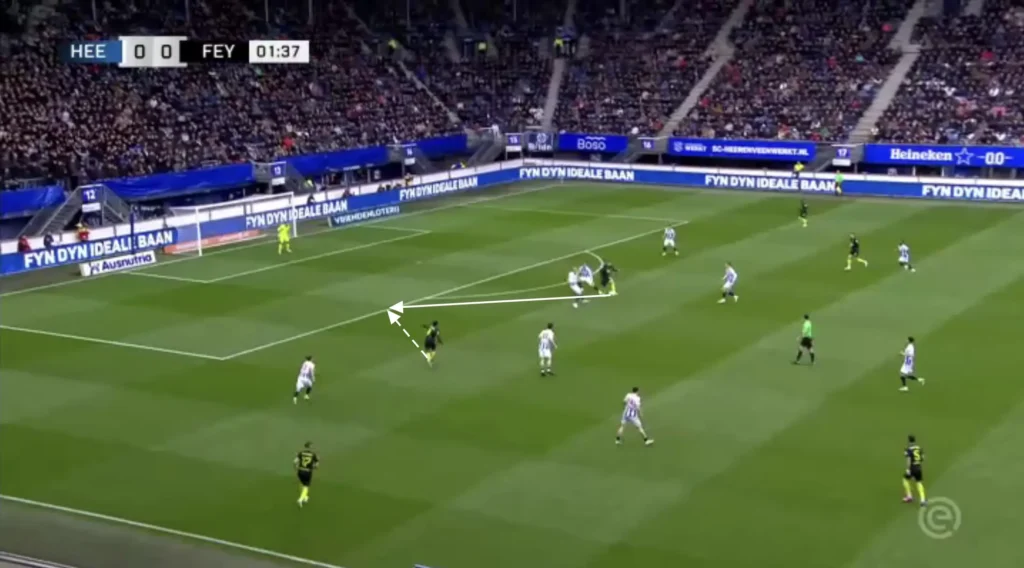
Third-man
Arne Slot, as established, likes it when his team plays through the opposition when possible. One vital tool that they often use is the third-man principle. This means using a third player to reach a free player whose passing lane is blocked.
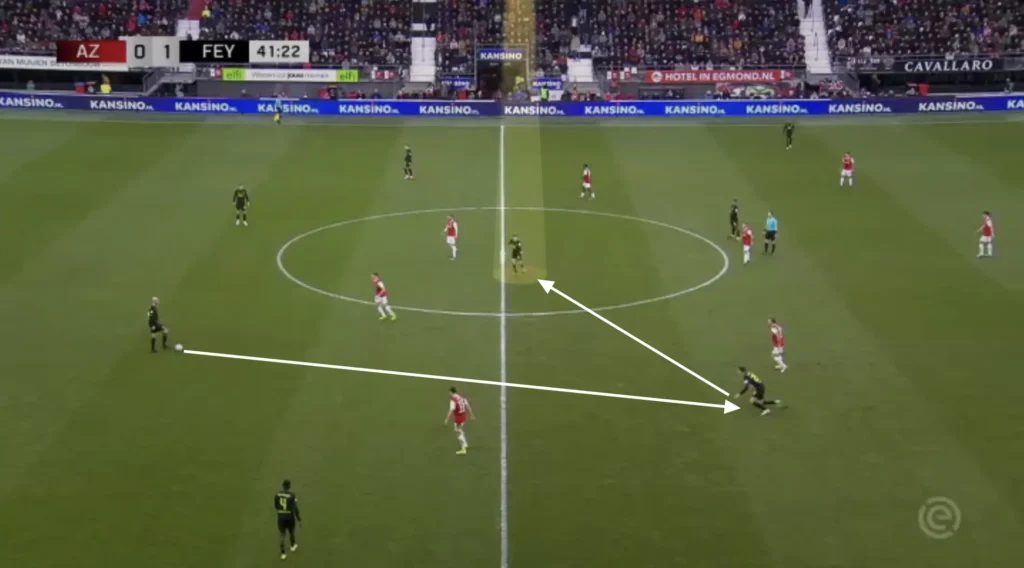
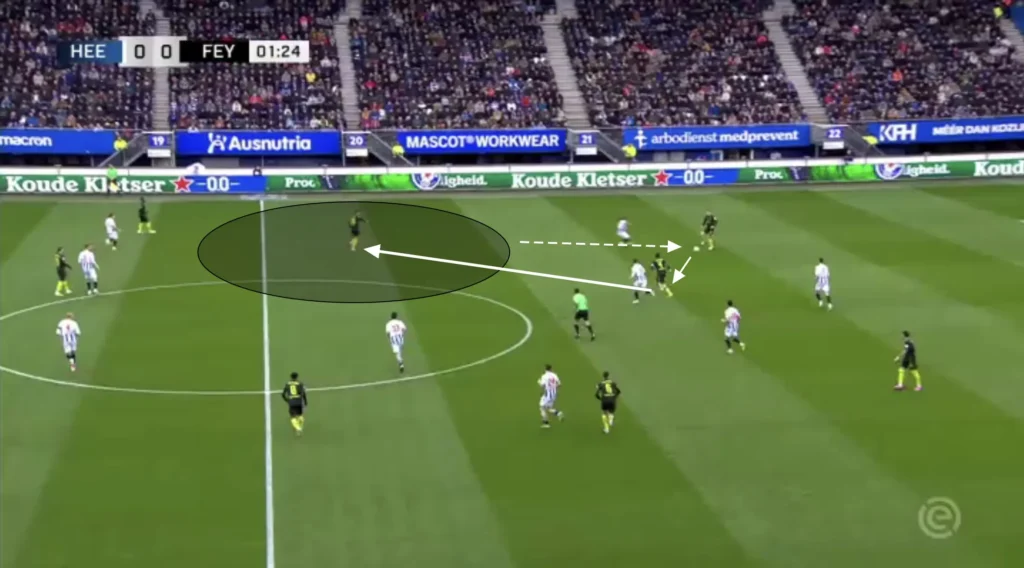
Numerical Advantages
Another massive aspect of Feyenoord’s high build-up is their ability to create numerical advantages against the opposition’s defensive line. Their front five naturally becomes numerically superior against a back four, which they are great at taking advantage of.
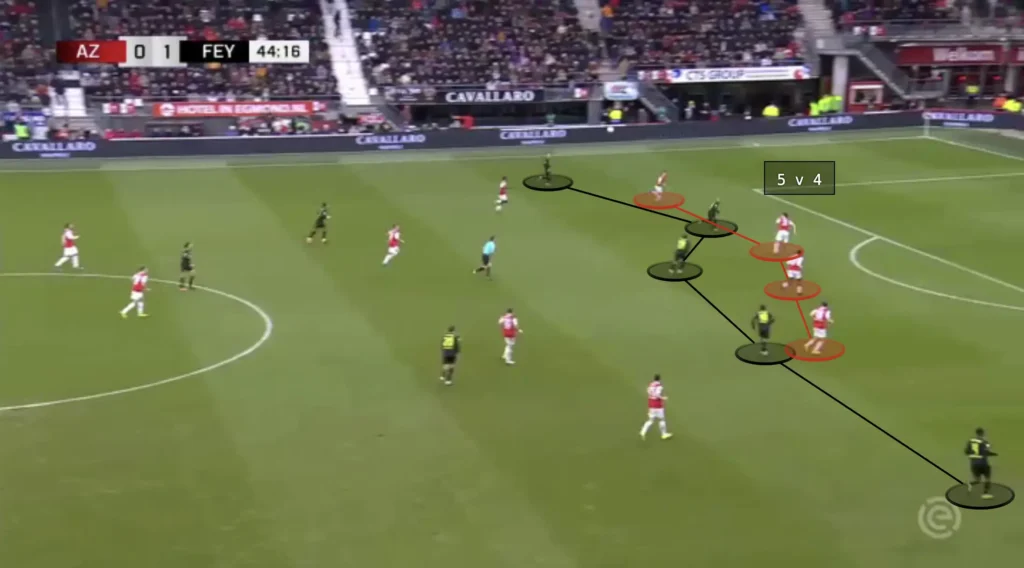
The opposition backline can only control four players at once, sometimes even less if they want to be +1 against the striker. The objective for Feyenoord will then be to find the free player. In this situation, the opposition fullback has pushed out to the winger while the center-backs are in the middle with the striker. This opens the space for the right-sided attacking midfielder, who can receive a pass, turn, and attack the defense.
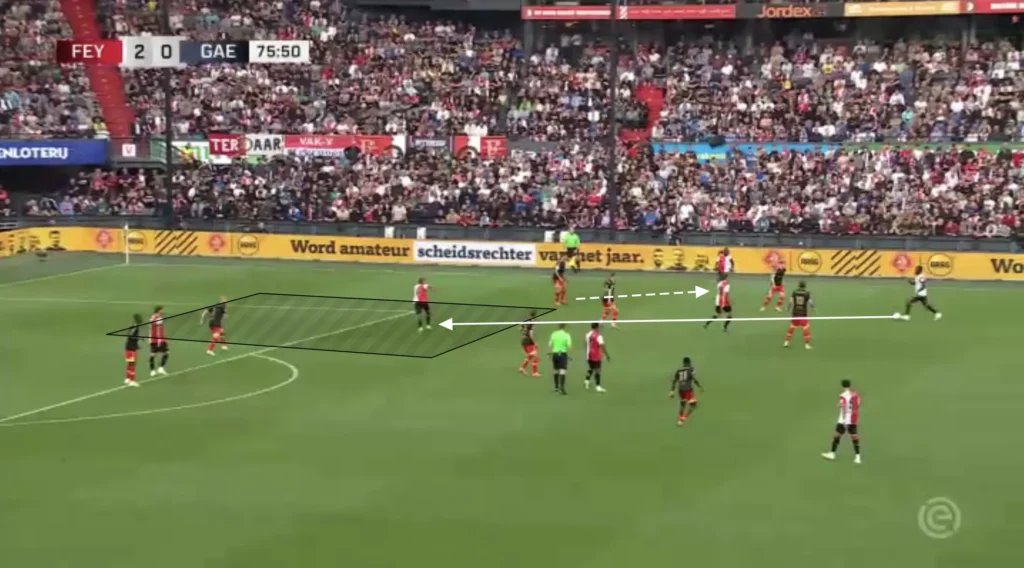
In this situation, however, the fullback and the ball-side center-back have pushed out to the winger and attacking midfielder. This opens the space between the center-backs for a Feyenoord midfielder to run into and receive a pass.
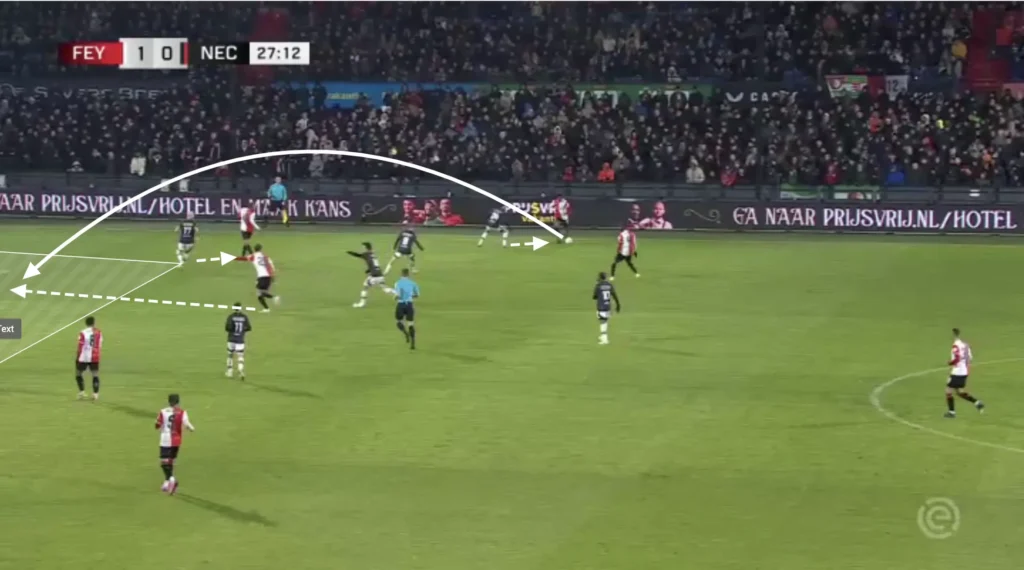
Another way they exploit this numerical superiority is with the long switch. When the defending team is positioned on one side, the weak-side fullback becomes vulnerable to the long switch of play due to the 1v2 against Feyenoord’s winger and attacking midfielder. Slot’s team often capitalizes on this by getting the ball to the winger and creating many opportunities from 2v1 situations on the wing and in the half-spaces.
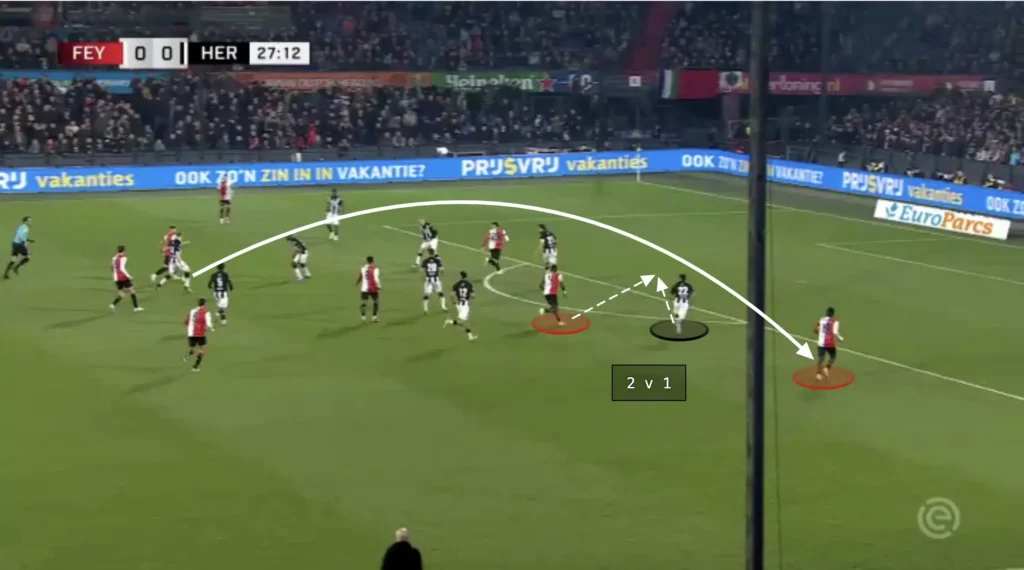
Defending
High Press
Arne Slot places much value on being aggressive without the ball. This shows in Feyenoord’s high pressure. Slot usually wants his team to go man-to-man and intensely press the opposition. They almost use their high press as an attacking threat, scoring many goals from winning the ball high up the pitch.
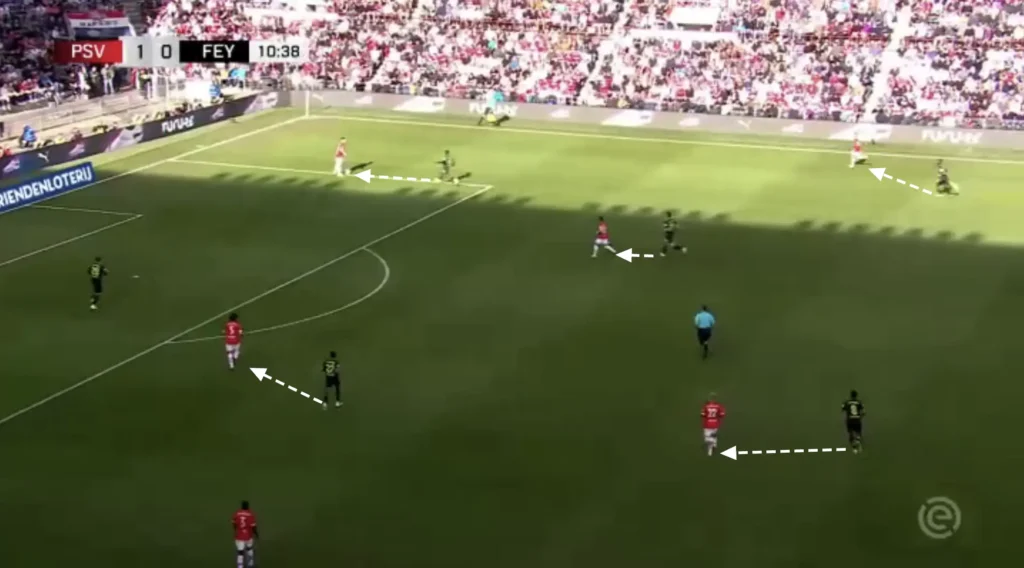
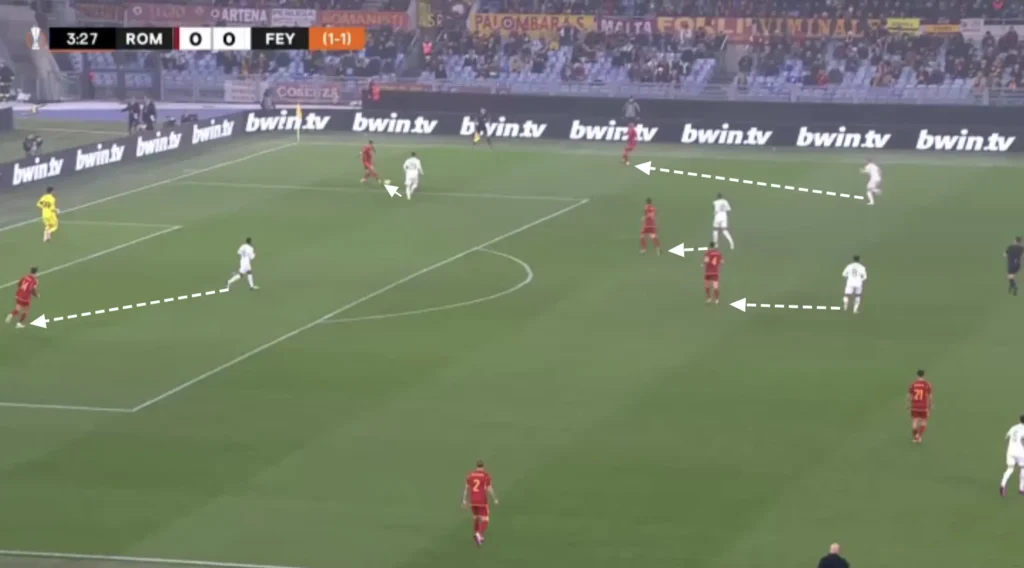
Low Press
In the low press, Slot’s Feyenoord uses a 1-4-5-1 formation. They look to set up in a mid-block, always trying to close the center, forcing the opposition out wide. Slot wants his midfielders to man-mark the opposition midfielders and the wingers to follow the opposition fullbacks.
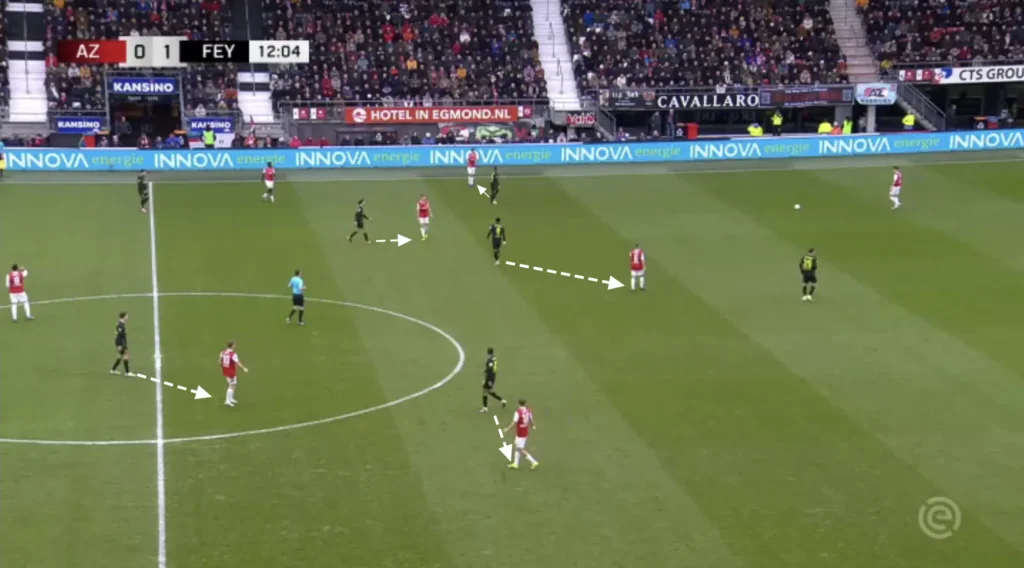
This makes their defensive shape very dynamic. Their midfield five adapts to the opponents, often creating asymmetrical shapes and formations. The man-to-man system makes it difficult for the opposition to find free players. However, it can confuse and cause issues for the players when facing fluid teams that often change positions.
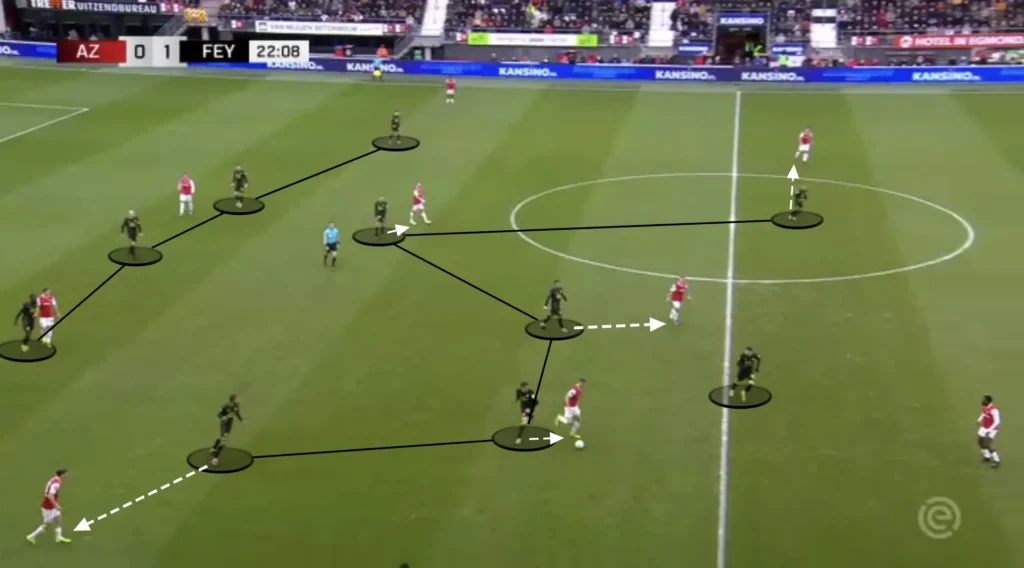
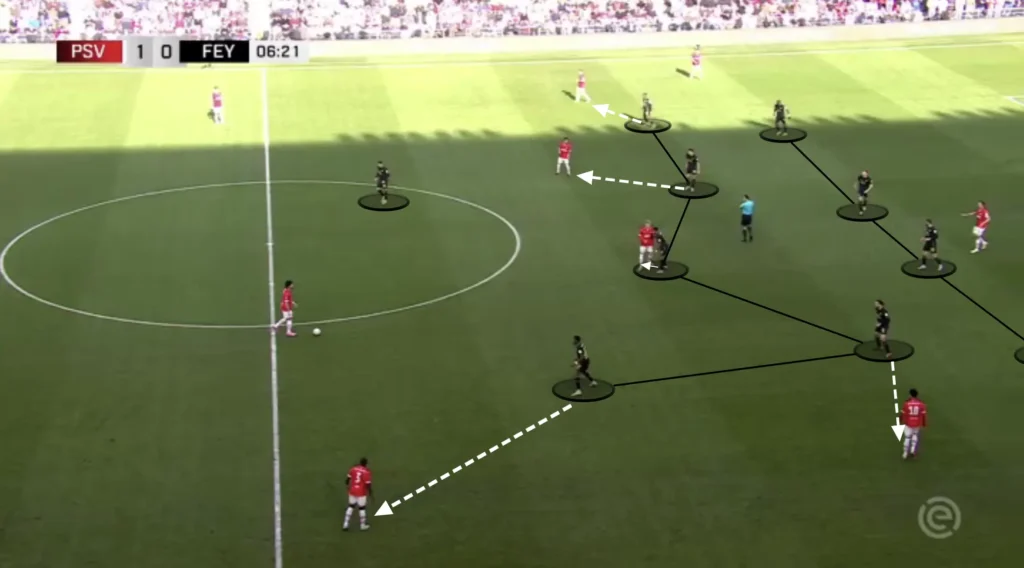
Slot’s Feyenoord also looks to squeeze the pitch when defending. This means constantly pushing the team up as much as possible when defending. Every time the opponent plays a slow, sideways pass or a back pass, Feyenoord’s first line of pressure pushes up, with the rest of the team following to stay compact. When the next pass comes, they push up even more, forcing the opponent back even more. They do this because it pushes the opponent further away from the Feyenoord goal, making it harder to create chances.
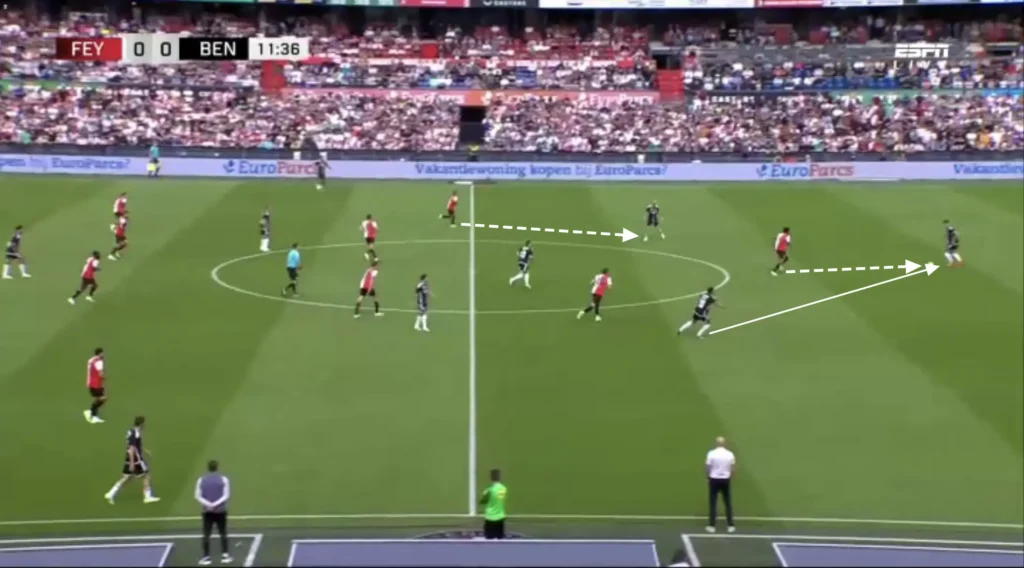
Transitions
Defensive Transitions
Positioning many players centrally, creating a numerical advantage in the midfield, creates good conditions in defensive transitions. Many players close to the ball after losing possession means that many players can work towards regaining possession. Therefore, Feyenoord often successfully regains possession directly after losing it.
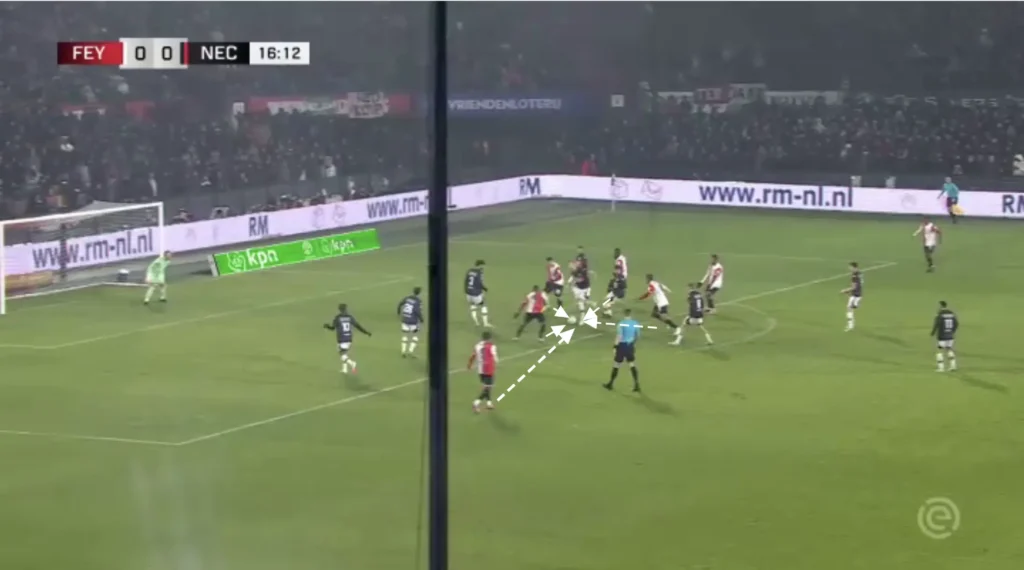
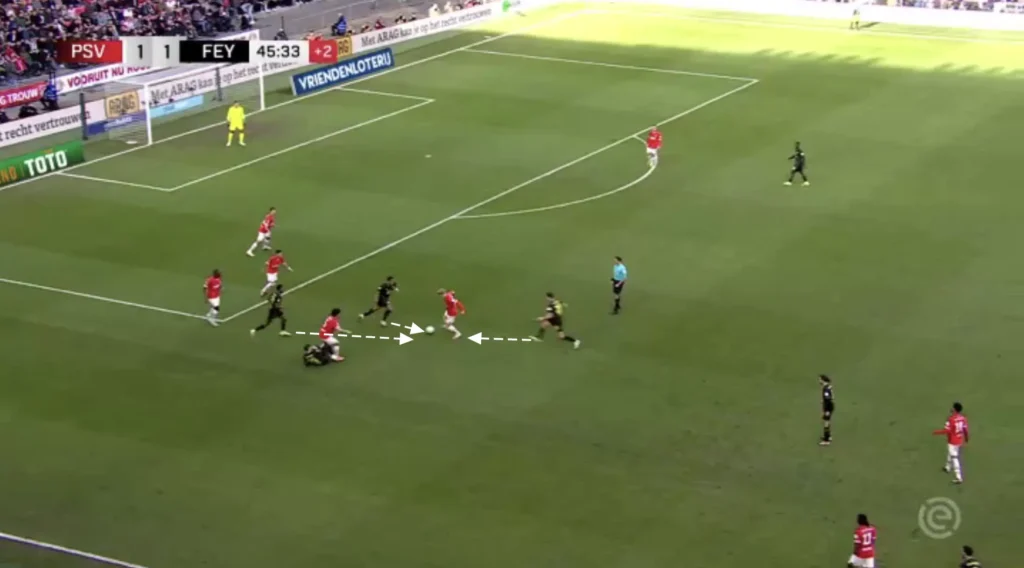
Offensive Transitions
Arne Slot also wants his team to counterattack in their offensive transitions. They do this with a high tempo, often attacking the spaces between the center-backs and fullbacks.
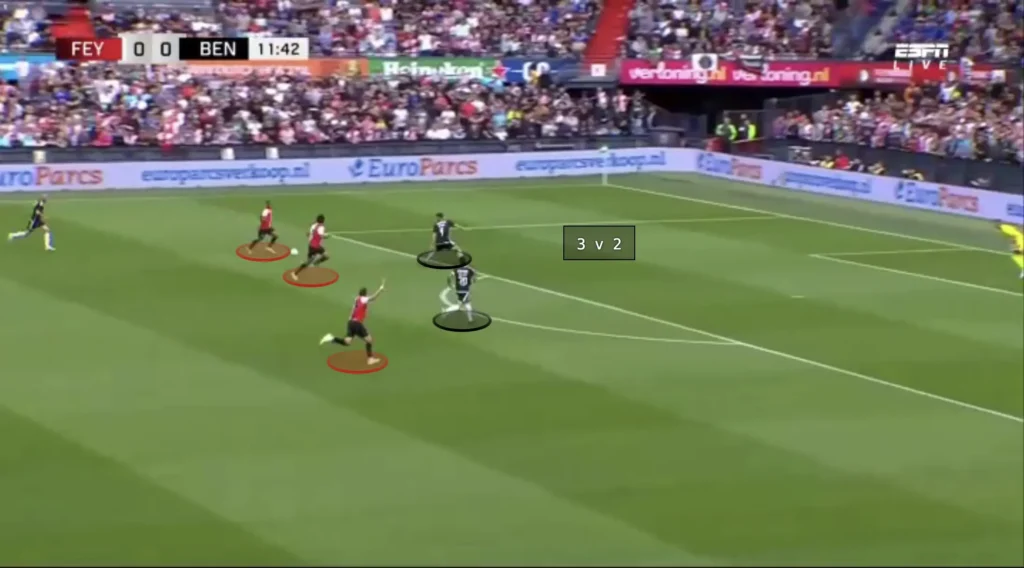
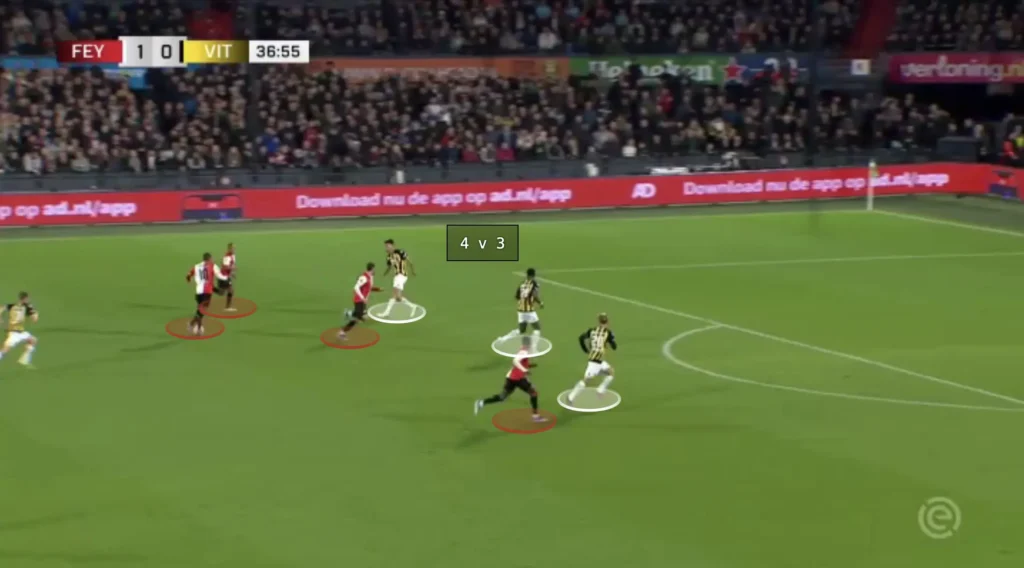
Final Thoughts
In conclusion, this tactical analysis has provided a comprehensive overview of Arne Slot’s strategic approach at Feyenoord. Through meticulous examination of formations, player roles, and key principles, we’ve gained insight into the tactical sophistication employed by Slot to shape Feyenoord’s style of play. From a focus on possession-based football to fluid attacking movements and organized defensive structures, Slot has instilled a cohesive and dynamic philosophy within the team. As Feyenoord continues to evolve under his stewardship, the tactical nuances highlighted in this analysis serve as a testament to Slot’s impact and the promising future ahead for the club.
